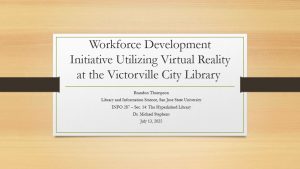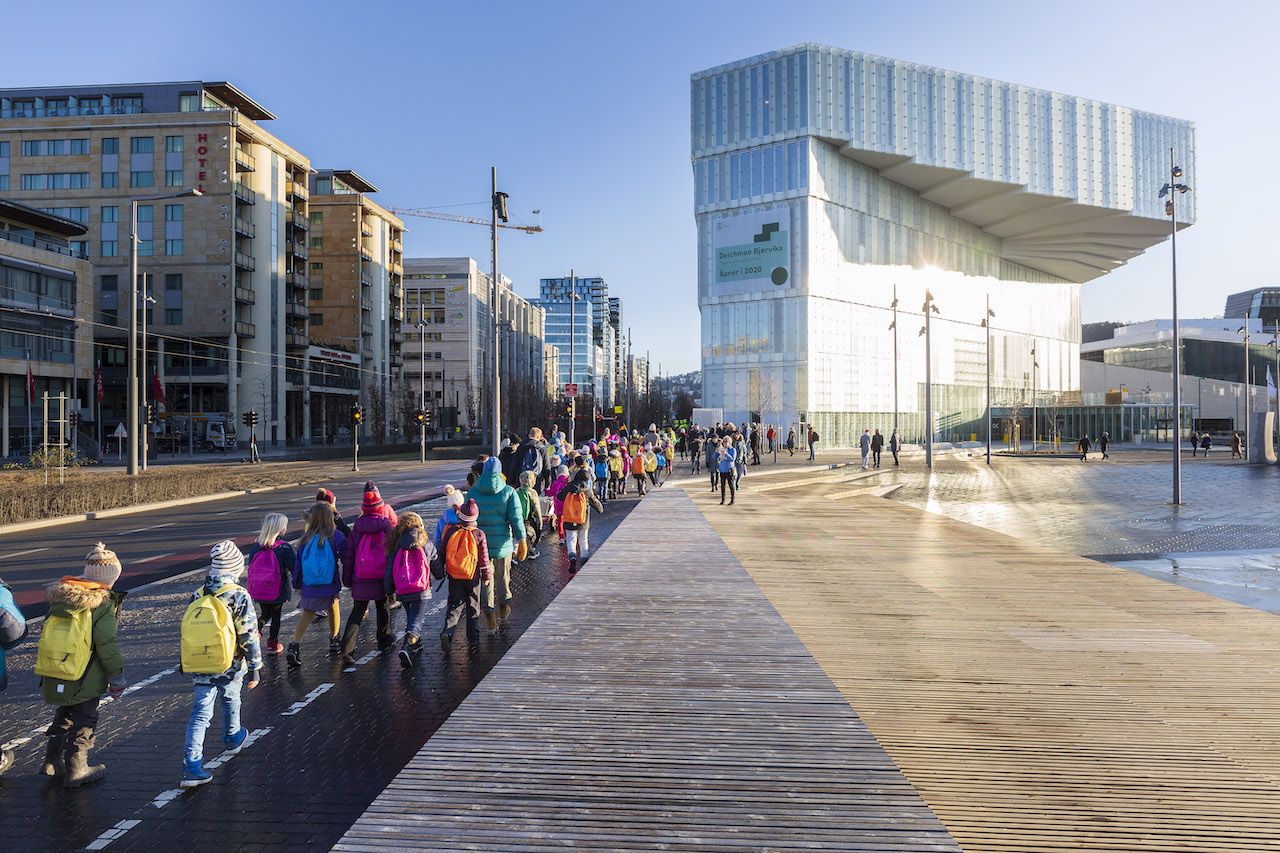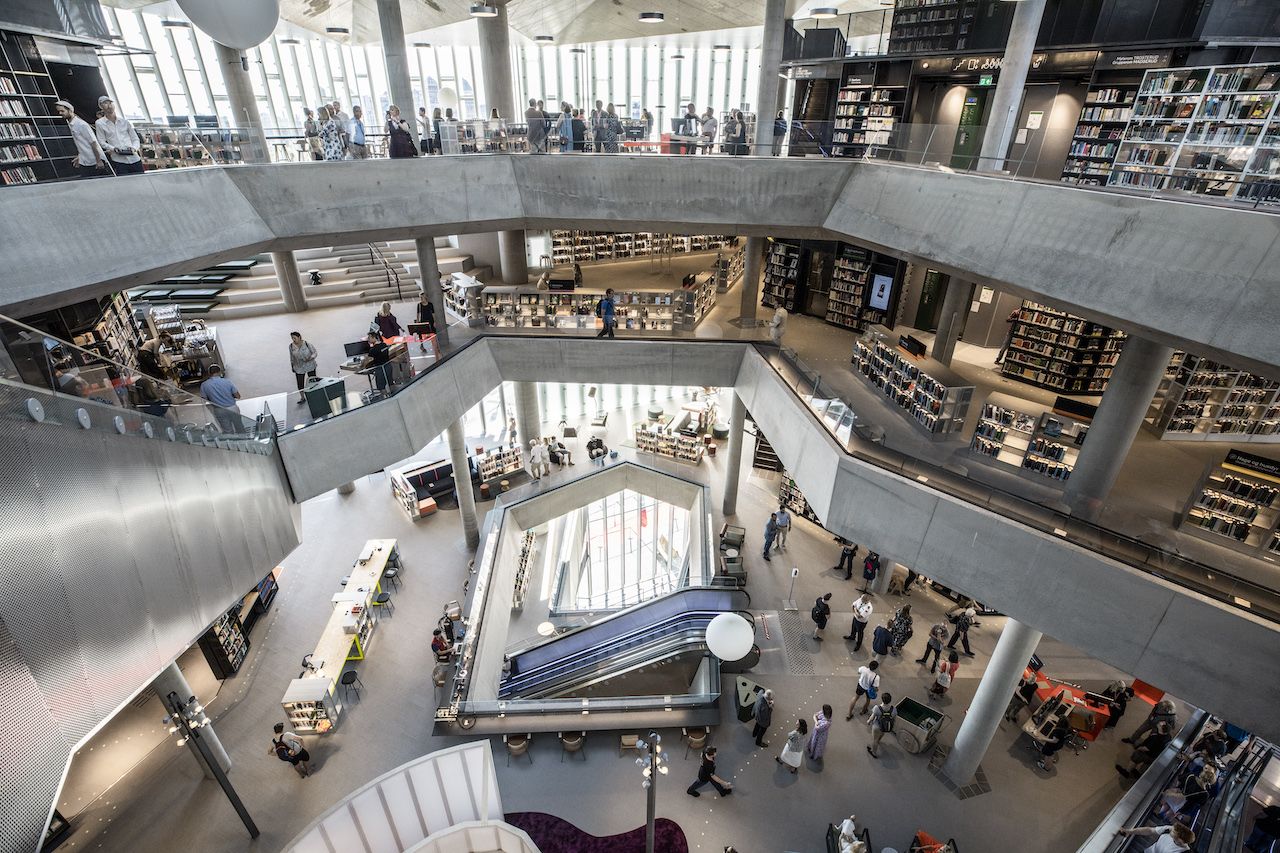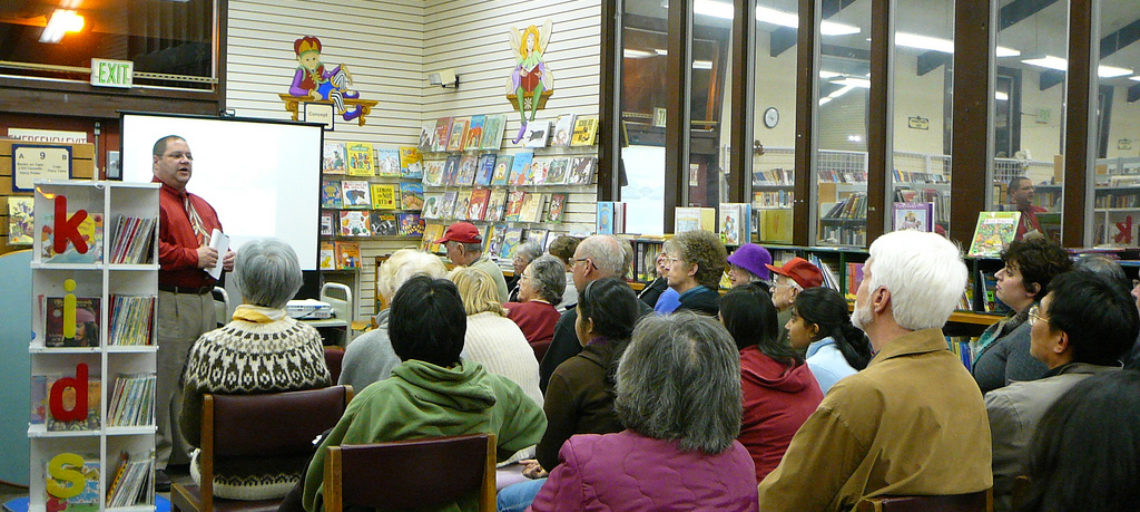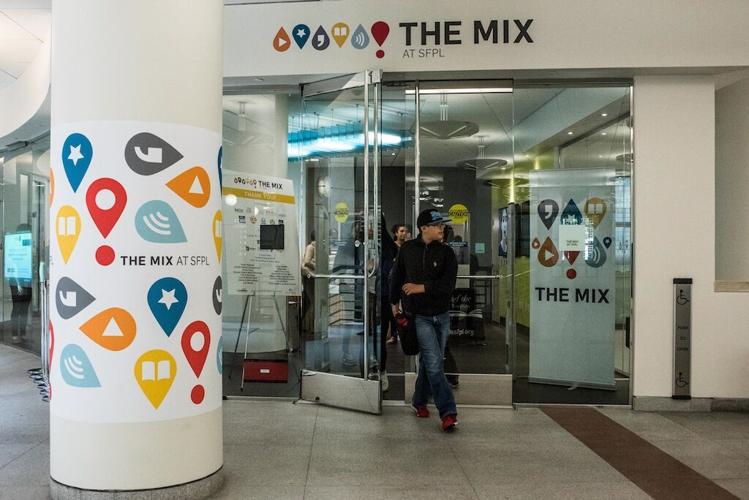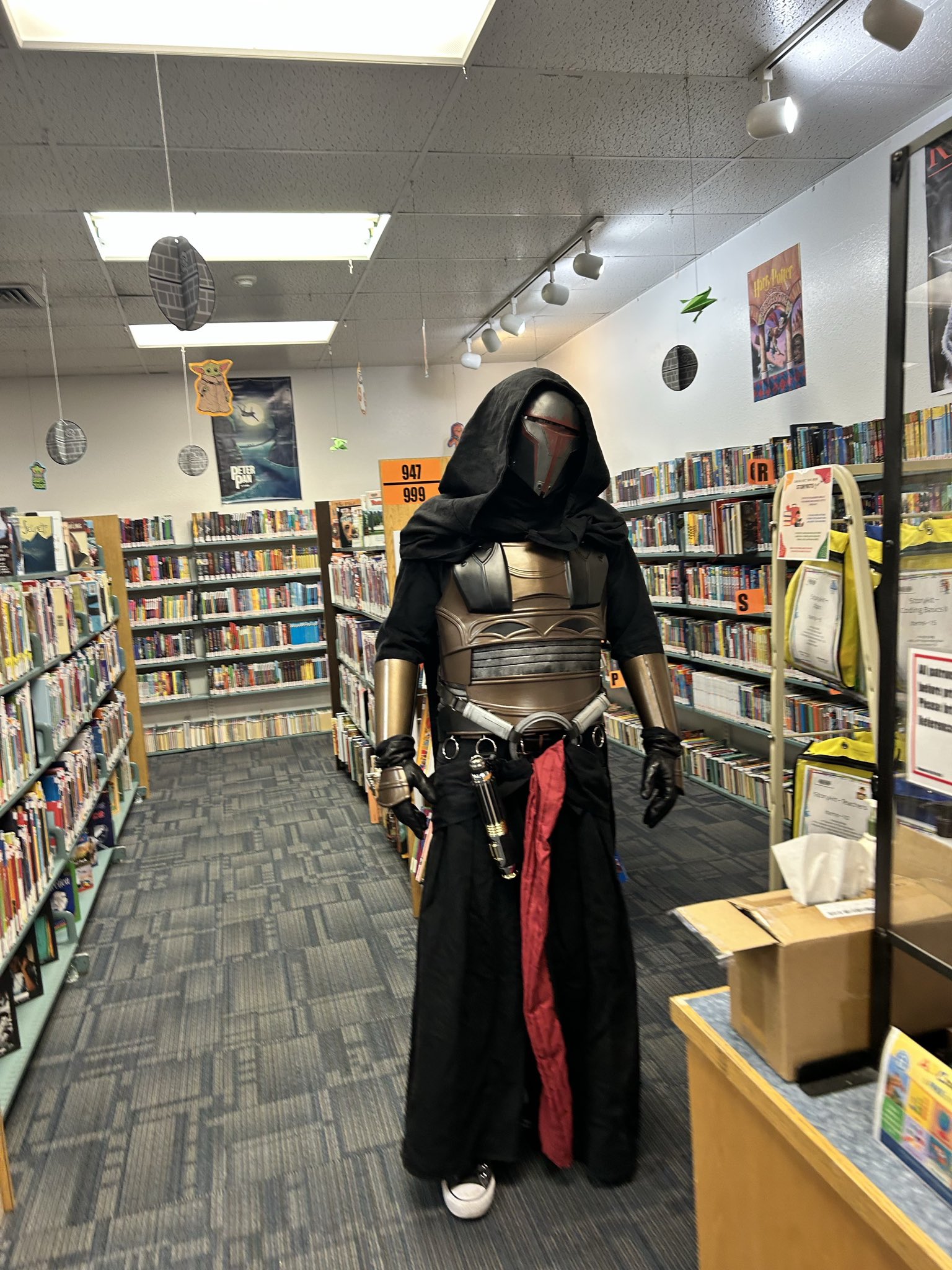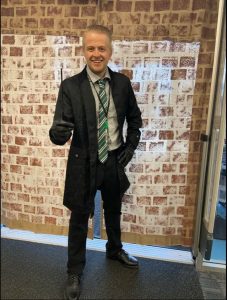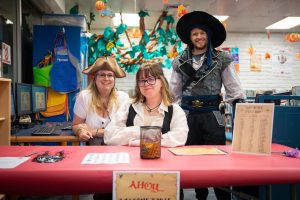
Screenshot of the outside of the Community Virtual Library in Second Life (Community Virtual Library, n.d.).
Learning no longer occurs solely in the formal learning environment of a classroom, but everywhere, as advancements in smartphones and Web 2.0 technologies have enabled users to access almost any website, regardless of their location, instantly. This “learning on the move” trend has not gone unnoticed by library professionals, who have worked to transform the physical and digital spaces of their libraries from static learning warehouses into dynamic and collaborative environments that facilitate lifelong learning. Further, by embracing “always in beta” librarianship, library professionals can create inclusive, exploration-driven, and technology-focused learning experiences (Stephens, 2014, 2016, 2019, 2025a, 2025b). For example, by teaching users basic digital literacies in the library, library professionals have already unlocked new pathways of learning for those who want to acquire other skills that will help them find better career opportunities (Digital Promise, 2016). Library professionals have also transformed their library websites into learning environments by creating LibGuides on certain subjects or linking to other resources, such as other LibGuides, YouTube videos, open-access databases, etc. Furthermore, certain libraries also offer access to learning opportunities, including Career Online High School, subscription-based databases, and newspapers. Regarding library programming, library professionals have created STEAM-based ones for children and teens that allow them to think critically and creatively, and gain skills that could help them as they transition into adulthood (Breeding, 2019; Stephens, 2014, 2016, 2019, 2025a, 2025b). One of the STEAM programs that was discussed in the library as a classroom sub-module was one where users could create solar ovens to make s’mores (Stephens 2025a). This one stood out to this author because the children’s librarian at his library ran this exact program!

Screenshot of the area outside of the Community Virtual Library in Second Life (Second Life, n.d.).
Libraries have also begun to embrace Virtual Reality (VR) as a way to enhance and create new and innovative programming. One of the most common uses is to allow users the opportunity to play or interact with VR apps such as Beat Saber, Superhot VR, Google Earth VR, and Tilt Brush. While creating technology-focused programming that inspires users and allows them to be as creative as possible through gamification is an important part of librarianship, a group of librarians took technology-driven programming to a new level. In 2007, a group of librarians came together in Second Life, a multiplayer virtual world, to create the Community Virtual Library (CVL) in order to provide programs and services to the users of Second Life (Community Virtual Library, n.d.) The CVL “strives to create a real (albeit virtual) library for digital citizens, fostering community building and virtual networking for librarians. Information professionals maintain the library and appreciate the help of volunteers, educators, and lifelong learners” (Community Virtual Library, n.d.). One of the best things about CVL is that, because it is hosted on Second Life, the library can be accessed through VR! This author did exactly this with his VR headset for a previous class, and it was a great experience. When he visited last year, it was during Banned Books Week, and outside the library, there was a display that had the theme from that year’s Banned Books Week plastered on the front. This showed me that the CVL is a living organism that is constantly being updated. Further proving this, around the hangout pier in the virtual world, there is a commons area where library professionals can network! Inside the actual library was a virtual reference librarian who introduced me to the library’s services and resources. Next to the reference desk was a newspaper stand that hosted articles from current events. Going further into the library were bookshelves organized by genre that linked to ebooks and audiobooks upon interacting with the corresponding digital element. This author could go on, but it was so cool seeing a library hosted entirely in a virtual world, giving users even more access to the incredible resources of a library.
References
Breeding, M. (2019). Public libraries are teaming up to prepare middle schoolers for 21st century careers and increase access to STEM learning opportunities. Urban Libraries Council. https://librarytechnology.org/pr/24146
Community Virtual Library. (n.d.). About us. Retrieved July 29, 2025, from https://communityvirtuallibrary.org/
Digital Promise. (2016, January 28). The library as a gateway to 21st century skills. https://digitalpromise.org/2016/01/28/chicago-public-library-the-library-as-a-gateway-to-21st-century-skills/
Second Life. (n.d.). Community Virtual Library. Retrieved July 29, 2025, from https://secondlife.com/destination/community-library-island
Stephens, M. T. (2014). Making the case for the library as space for infinite learning. State Library of Queensland. https://www.dropbox.com/scl/fi/4zt1yliwb2ffzr8euix2p/YLibraryInfiniteLearning.pdf?rlkey=m0v6lkd43ufilkp5aktawhlpr&e=1&dl=0
Stephens, M. T. (2016). The heart of librarianship: Attentive, positive, and purposeful change (1st ed.). ALA Editions.
Stephens, M. T. (2019). Wholehearted librarianship: Finding hope, inspiration, and balance (1st ed.). ALA Editions.
Stephens, M. T. (2025a). The hyperlinked library: Library as classroom [Lecture recording]. Panopto. https://sjsu-ischool.hosted.panopto.com/Panopto/Pages/Viewer.aspx?id=c716d09f-f8cf-4a08-bef8-af34011f855e
Stephens, M.T. (2025b). Module 11: Infinite learning – 1. INFO 287 – The Hyperlinked Library. https://287.hyperlib.sjsu.edu/module-11-infinite-learning-1/

